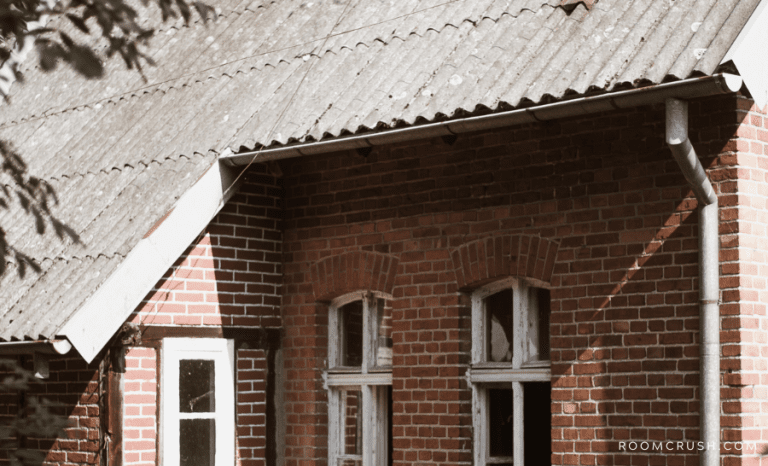Top 10 Tips To Prepare Your Garden For Winter

Top 10 Tips To Prepare Your Garden For Winter. Many gardeners can relate to the fact that it can be a quiet time in the garden in winter-with plants being dormant. And if you live in very cold climates, the thought of preparing your garden for winter is inevitable now that the cold temperatures, drying winds, and snow cover can cause severe problems and damage in your landscape if you don’t take proper precautions. Since the harsh winters can affect gardens severely, it is important to mitigate the damages in order to keep your garden in good shape while awaiting the bloom of spring. Here’s what you need to know.
Top 10 Tips To Prepare Your Garden For Winter
Some of the very hazardous effects of the harsh winter weather to our gardens include:
This site uses ads and affiliate content as an Amazon associate earning on qualifying purchases. Disclosure.
- Plants browning due to a windburn when it gets cold and windy, this is an irreversible stress response that makes evergreen roots lose moisture as the ground freezes making the foliage to brown around the edges, and in bad enough cases, all over.
- Plants easily dying in the winter because they cannot photosynthesize and create food due to the lack of sunlight and the below-freezing temperatures stop water circulation in the plant’s sap.
- Cracking on trees due to frosty weather.
- Breaking down of tree branches from snow load.
- Sprinkler systems, gas lines, and faucet drain to outdoor kitchens can be destroyed or burst from a prolonged freeze.
- Cracking up of pots used for planting.
- Due to the little food available for wildlife, animals like deers and rabbits can invade gardens in search of tree leaves and shrubs to eat, leaving them much worse.
As you edge towards the winter, you want to ensure that your plants go over winter with minimal harm.
You May Also Like: How to Prepare your Garden for Fall
Here are our top 10 tips to prepare your garden for winter:
Plant Before The Ground Freezes
Gardeners should get everything in the ground before it freezes to ensure the planst are better protected- this includes the plants still in their nursery pots, no matter how late it has gotten.
Thus, fall would be a good time when the ground is still warm enough to support root growth.
It is recommended to plant at least 6 weeks before winter since this window gives the plant time to get established enough to withstand the cold and snow.
Plant Native or Hardy Plants in the Fall
Your choice of plants will determine how well they survive in the winter.
You want to choose hardy specimens or even native plants in your area as they adapt best to their climate.
These cold-resistant perennials and other hardy plants survive the winter in a resting stage underground while relying on their storage organs during this time.
Usually, they store nutrients in storage organs, such as bulbs, taproots, and tubers, throughout the spring and summer. No wonder, spring bulbs are a winter favorite for gardeners.
Some great plants for winter include:
- hyssop that can withstand the coldest winter months,
- coneflower that is hardy to Zone 3 or 4 – however, you want to cut down the stems and add 3 to 4 inches of mulch for insulation to help them survive the winter and look beautiful next summer,
- lily of the valley, a very low maintenance plant that can be prepared for winter and bloom beautifully in spring,
- blue spruce tree, a beautiful winter plant that is hardy in Zones 2-7. However, beware of using insecticides on this tree, as they can strip away the needle coating that gives the blue spruce its hue.
Bare root plants are also amazing choices to plant in your fall garden. These dormant perennials, shrubs, or trees are grown in normal nurseries, but then dug up while dormant.
Plant your bare root plants in cool weather from fall through spring, depending on your hardiness zone and the type of plant.
However, if you receive bare-root plants at a time when you cannot plant them in the garden, be sure to keep the roots moist until you can plant them.
You May Also Like: The Best Indoor Plants For Beginners
Provide Water For Your Plants
If your location isn’t prone to heavy snows or is prone to drying winds, supplemental winter watering is vital.
Thus, you want to deeply water all at-risk plants thoroughly, and continue to water them as needed before the ground freezes.
Watering the trees, shrubs, lawns, and perennials during prolonged dry fall and winter periods helps prevent root damage that affects the health of the entire plant. However, water only when the ground has no snow cover.
You can water early in the day since this water protects your plants against nighttime freezes.
The water in the soil acts as a trap for heat and helps the area around your plant stay a little bit warmer than the air as the night approaches.
And when coupled with insulated covers, this extra heat can protect your plants from damage.
The best thing is that your plants won’t need as much water during their dormancy as they do in the spring and summer, however just be sure to water them deeply a few times a month.
Water when the soil is dry to the touch, the temperature is not below 40 F. (4 C.) and, if possible, when the wind isn’t blowing since drying winds may carry off much of the water you’re trying to apply to the roots of your plants.
Mulch Your Plants
Even the plants rated hardy need mulching for extra protection.
A 2-4 inches thick blanket of mulch will go a long way in insulating the plant roots when the ground has frozen.
You can use ground bark, shredded leaves, or pine boughs or branches cut from your Christmas tree which makes an excellent, airy mulch for any fledgling evergreen perennials because they help moderate temperature changes and offer protection from the winter wind and sun.
Spray an Anti-transpirant on your Evergreens
Evergreens tend to experience winter burn, also known as winter desiccation.
This irreversible condition causes your evergreens to be completely sapped out of moisture thus, they are completely dry and the plants have brown leaves.
To mitigate this damage, spray an anti-transpirant (also called an anti-dessicant) on any recently transplanted or marginally hardy evergreens to seal the microscopic openings in their leaves. Wilt Pruf √ is a particular favorite among gardenersThis prevents severe moisture loss.
Shelter Your Plants
Not only is planting native or winter-resistant plants fundamental for preparing your garden for winter but also locating the plants where they will have some shelter.
Even the hardiest perennials might not sleep through winter peacefully if the snowfall is iffy and very harsh.
Also, the tissues of trees and shrubs are more susceptible to cold temperatures especially in their first year or two after transplanting.
Tucking in your plants into a seasonal shelter before the cold weather settles in.
You can build a winter home for larger plants, use overturned plastic pots, heavy-duty paper bags, lengths of burlap, or shredded leaves to cover your plants.
When using burlap, you want to pound a few stakes around your plants, and staple burlap sheets to make a windbreak that goes all around the plants. Stuff the burlap protector with leaves or straw to provide a little extra insulation.
Also, any plants that will need long-term coddling shouldn’t be positioned prominently in the stark winter landscape.
Set Up Windbreaks
Using windbreaks like tree windbreaks helps to reduce wind speed during harsh winters, thus, preventing damage to your plants, fences, greenhouse glasses, and containerized plants.
You can erect a man-made windscreen, for instance, a fence or wall that blocks the wind. These are highly effective at deflecting wind away from small often-used outdoor living spaces such as a patio or deck.
A more affordable and effective alternative to solid-built screens is a dense shrub hedge windbreak around living spaces or just on one side.
When large 10-foot tall shrubs are used, they make a solid windbreak and privacy screen for a patio, deck, or an entire small yard.
Prevent Salt Damage
Salt damage damages lawns, trees, other garden plants, and hardscaping.
The winter salts used in snow melting can harm the landscape and when absorbed by plants, cause dehydration, interfere with chlorophyll production, or reduce a plant’s hardiness.
You want to use only as much salt or de-icing as needed and only apply it where you need it most to prevent salt damage.
Guard Your Garden Against Animals
When it comes to protecting your garden in the winter, do not overlook animal damage in the winter!
When there is little left to eat, deers will eat just about anything, including your evergreen foliage. Rabbits will also girdle young tree trunks, and voles will eat the roots out from under shrubs and perennials. This can be more damaging to your garden than any winter storm.
If you live in a deer country, you may need to erect a tall fence around the whole yard or at least around plants that deer favor.
In addition to fencing is spraying vulnerable plants with scent and taste repellent sprays available at most garden centers.
You want to also wrap the trunks of young trees and shrubs with burlap sheets or plastic tree wraps to prevent animal chewing.
Some gardeners go the extra mile to protect trunks with a cylinder of wire or hardware cloth around their perimeter.
Protect Your Outdoor Living Features
If you live in an area where you need to winterize, then you’re probably not going to be using your outdoor kitchen or gas-fueled fire pit until spring.
Thus, shut off the gas from a shut-off lever in the house to prevent leaks due to winter damage.
Clear all water from hose bibs and open the faucets to drain any remaining water. This prevents damage from trapped water freezing in the drain of your sprinkler systems or outdoor sinks.
You can also pour a little plumbing antifreeze down the drain to keep it from freezing.
Do not forget your patio furniture! Bring them indoors, or use fitted covers to protect it outdoors over the winter.
You May Also Like: 7 Outdoor Essentials For a Summer Backyard
How are you preparing your garden this winter? We’d love to know your tips!






